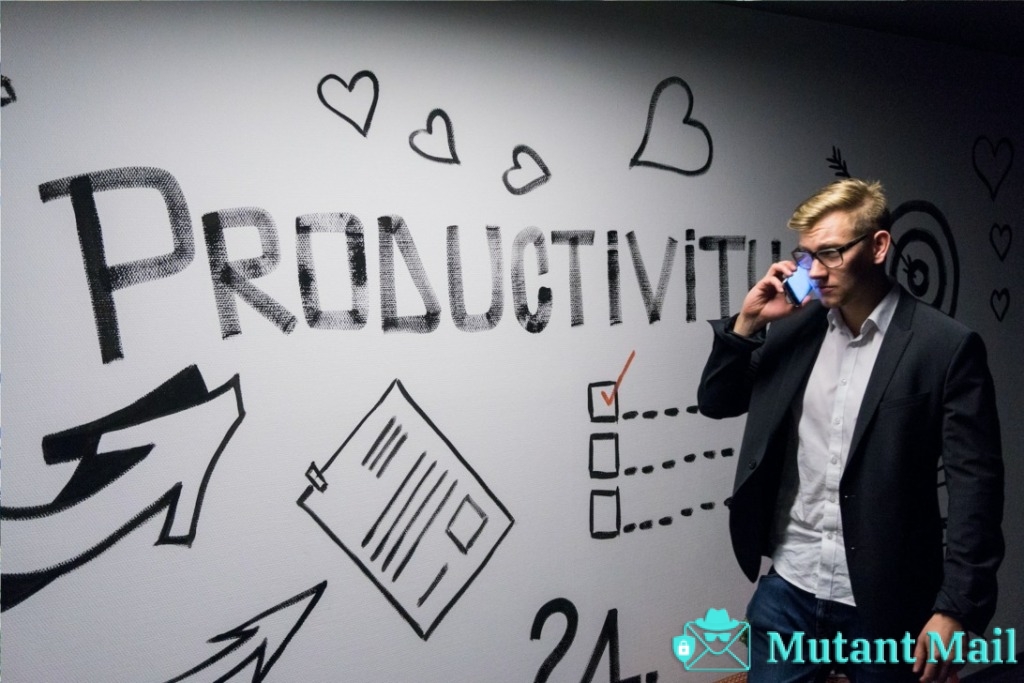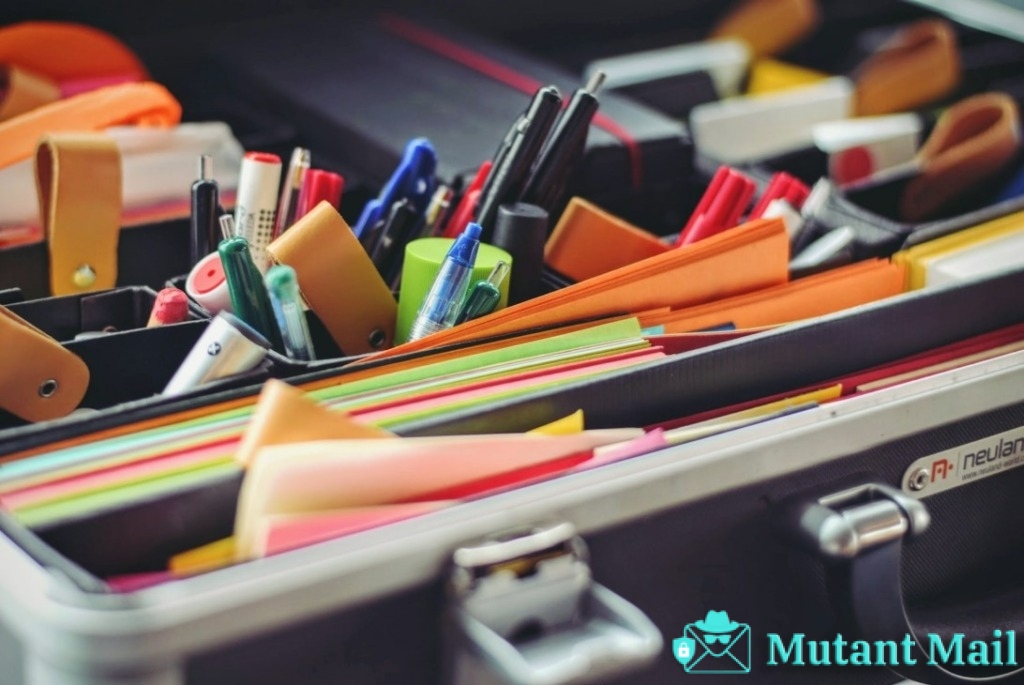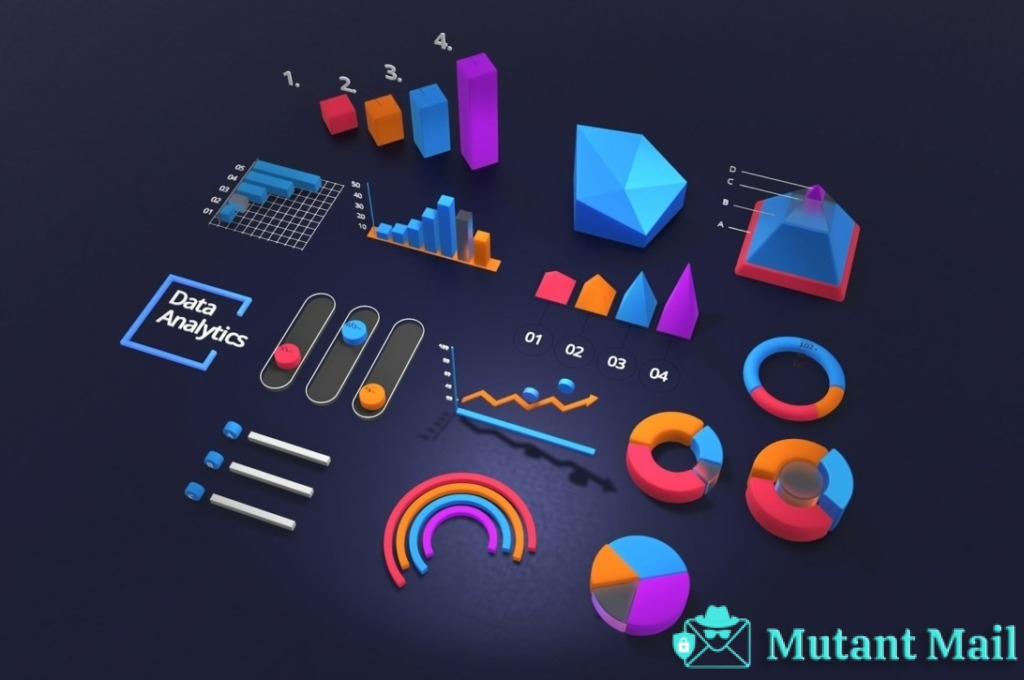Are you drowning in emails? Feeling overwhelmed and stressed out by the never-ending stream of messages flooding your inbox? Fear not! With the right tools and techniques, you can supercharge your email productivity and take control of your digital life.
In today’s fast-paced world, efficient email management is essential for success. It can be a major time-suck if not handled properly, leading to frustration, missed opportunities, and even burnout. But fear not! By implementing the following strategies and utilizing helpful tools, you can streamline your inbox, prioritize your communications, and achieve a sense of order amidst the chaos. So let’s dive in and explore how to increase your productivity while reducing stress levels when it comes to managing emails.
Set Clear Goals for Your Inbox Management
You’ll feel less overwhelmed by your inbox if you set specific goals for managing it. First, establish email goals that align with your broader objectives. For instance, if you want to increase productivity at work, aim to respond to all emails within 24 hours and maintain a clean inbox by the end of each week. Second, use productivity measurement tools such as RescueTime or Trello to track your progress towards these goals. These tools will help you identify areas where you can improve and stay motivated.
Once you have clear email goals in place, prioritize your emails based on their level of urgency and importance. Start by sorting them into categories such as ‘urgent,’ ‘important,’ ‘low priority,’ and ‘spam.’ Respond to urgent emails first and tackle important ones next. Low priority messages can wait until later or be delegated to someone else on your team. Finally, delete spam messages immediately without wasting any time.
By setting clear email goals and prioritizing your inbox management, you’ll be able to supercharge your email productivity in no time. Not only will this approach save time in the long run but also help reduce stress levels associated with managing an overflowing inbox. The next section will discuss techniques for effective email prioritization that will further enhance your efficiency when it comes to managing emails.

Prioritize Your Emails
When it comes to managing your inbox, prioritizing emails is key. Did you know that the average office worker receives 121 emails per day? With so many messages flooding your inbox, you need to develop prioritizing techniques that work for you. One effective strategy is to categorize emails based on their level of urgency.
To do this, start by creating categories such as “urgent,” “important but not urgent,” and “low priority.” Then, assign each email a category based on its content and importance. This will help you focus on the most pressing matters first and avoid getting bogged down by less important messages.
Another useful email prioritization technique is to use tools like filters and rules to automatically sort incoming messages into specific folders. For example, you can set up a filter that directs all emails from your boss or clients directly to a designated folder labeled “priority.” This way, you can easily identify which messages require your immediate attention without having to sift through dozens of other unrelated emails.
Prioritizing your emails can significantly improve your productivity by allowing you to focus on the tasks that matter most. In the next section, we’ll discuss how using keyboard shortcuts can further streamline your email workflow.
Use Keyboard Shortcuts
Using keyboard shortcuts can speed up your email workflow and make it easier to navigate through your inbox. These simple commands can save you time and reduce the need for using a mouse or trackpad. Here are some of the top keyboard shortcuts to boost email efficiency:
- To compose a new email: press ‘c’
- To reply to an email: press ‘r’
- To forward an email: press ‘f’
- To archive an email: press ‘e’ or ‘#’
You can also customize keyboard shortcuts for your specific needs. For example, if you frequently move emails to a certain folder, you can assign a shortcut key for that action. This will eliminate the need for manually dragging and dropping emails.
Incorporating keyboard shortcuts into your email routine may take some practice, but it’s worth the effort in terms of increased productivity. By reducing the amount of time spent navigating through menus and options, you’ll be able to focus more on responding to important messages. Plus, once you get used to using these shortcuts, they’ll become second nature.
Now that you know how to use keyboard shortcuts effectively, it’s time to move onto scheduling your email time. Instead of constantly checking your inbox throughout the day, setting aside specific times for emailing can help increase productivity even further.
Schedule Email Time
To maximize your productivity and minimize email distractions, it’s important to schedule dedicated time for checking and responding to emails. Determine your optimal email schedule based on when you are most focused and have the least amount of interruptions. During this time, turn off notifications to avoid constant interruptions and stay focused on the task at hand. By implementing a consistent email schedule, you can improve your efficiency and reduce stress related to overwhelming inbox clutter.
Determine Your Optimal Email Schedule
Figuring out the best time to tackle your inbox is like finding the sweet spot on a tennis racket – it takes practice and experimentation. Maximizing productivity requires creating a routine that works for you, and determining your optimal email schedule is no exception. Some people prefer to check their emails first thing in the morning, while others find it more effective to wait until midday or even later in the afternoon.
To determine your ideal email schedule, start by paying attention to when you are most alert and focused during the day. If you find yourself feeling sluggish in the morning but energized after lunch, consider making that your designated email time. Additionally, take into account any external factors that may affect your productivity, such as meetings or deadlines. By establishing a consistent routine and sticking to it, you can train your brain to be more efficient during these designated times and avoid wasting valuable mental energy outside of them.
Now that you have determined your optimal email schedule, it’s time to turn off notifications and eliminate distractions so that you can fully focus on getting through your inbox efficiently.
Turn Off Notifications
Now that you’ve determined your optimal email schedule, it’s time to take the next step towards supercharging your productivity: turning off notifications. Notifications can be incredibly distracting and interrupt your focus throughout the day. By turning them off, you’ll minimize distractions and improve your ability to stay on task.
The constant barrage of notifications can make it difficult to concentrate on important tasks and create a sense of urgency that isn’t always necessary. Instead of constantly checking your inbox every time a notification pops up, set aside specific times throughout the day to check your emails. This will allow you to prioritize tasks more effectively and ultimately lead to better productivity. So let’s turn those notifications off now, shall we?
Next up, let’s talk about how unsubscribing from unnecessary emails can further boost your email efficiency.
Unsubscribe from Unnecessary Emails
Stop getting bogged down by junk emails and unsubscribe from unnecessary ones to streamline your inbox. Email clutter is a major contributor to decreased productivity, and it’s time to take control of your email subscriptions. Start by identifying the messages that are clogging up your inbox and taking up valuable space. Once you’ve identified them, unsubscribe from those that don’t add any value to your life or work.
Managing email subscriptions can be overwhelming, but there are tools available that make the process much easier. Services like Unroll.Me allow you to see all of your subscriptions in one place and choose which ones you want to keep receiving or unsubscribe from. This way, you can quickly remove any unwanted emails without having to sift through each one individually.
By unsubscribing from unnecessary emails, you’ll not only declutter your inbox but also reduce distractions and improve focus on important tasks at hand. With fewer emails coming in, you’ll have more time for higher-value activities like strategizing or creative thinking. In the next section, we’ll explore how utilizing productivity tools can further enhance your email efficiency so that you can get even more done in less time.

Utilize Productivity Tools
Let’s take things up a notch and make our email game stronger by using some nifty gadgets that will help us hit the ground running. One of the most popular productivity tools for emails is email automation. By automating your emails, you can save time and increase efficiency. You can set up automated responses for frequently asked questions or inquiries, schedule emails to be sent at specific times, and even segment your email list to target specific groups.
Another great tool to consider is an inbox zero technique. This means keeping your inbox empty or close to empty by regularly archiving or deleting old messages and organizing new ones as they come in. There are various methods you can use for this, such as the “Four D’s” (delete it, delegate it, do it now, or defer it) or creating custom labels and filters in Gmail. The goal is to reduce clutter and ensure that important messages don’t get lost in a sea of unread emails.
By utilizing these productivity tools, you’ll be able to streamline your email management process and free up time for other important tasks. However, remember that these tools are meant to enhance your workflow – not replace good email habits like keeping your messages brief and to the point. In the next section, we’ll explore how you can achieve this without sacrificing clarity or professionalism in your communication style.
Keep Your Emails Brief and to the Point
To make sure your emails are effective and easy to read, keep them short and sweet by focusing on the most important information. Email etiquette dictates that you should avoid writing lengthy paragraphs or including unnecessary details in your messages. Instead, use concise communication tips such as bullet points or numbered lists to break down complex information into easily digestible chunks.
Remember that people receive dozens if not hundreds of emails a day, so it’s important to respect their time and attention span. Keeping your emails brief also shows that you value their time and are mindful of their workload. By sticking to the essentials and getting straight to the point, you can ensure that your message is more likely to be read and acted upon.
Incorporating clear and concise subject lines is another way to streamline your email communication. By using descriptive phrases that accurately reflect the content of your email, you can help recipients prioritize which messages they need to address first. This small detail can make a big difference in how quickly and effectively you’re able to communicate with others via email.
Use Clear and Concise Subject Lines
Now that you’ve learned how to keep your emails brief and to the point, let’s talk about another important aspect of email productivity: using clear and concise subject lines. The subject line is usually the first thing people see when they receive an email from you. It is crucial in grabbing their attention and making them want to read your message.
Maximizing impact with effective communication starts with a strong subject line. Keep it short, but make sure it accurately reflects the content of your email. Avoid vague or generic subjects like “update” or “meeting”. Instead, be specific and descriptive. For example, instead of “update”, use something like “Quarterly Sales Report Update”. This way, recipients can quickly understand what your email is about.
Using clear and concise subject lines not only helps you communicate effectively but also saves time for both you and your recipients. When the subject line clearly states what the email is about, there’s less need for back-and-forth clarification emails. By taking the extra time to craft an informative subject line, you’ll be able to streamline communication with colleagues or clients and accomplish more in less time.
As we move forward in our discussion on supercharging your email productivity, remember that effective communication goes beyond just writing clear messages; it also involves proper planning and prioritizing tasks based on their importance. In our next section, we’ll discuss why it’s important to learn how to say “no” when necessary without damaging relationships with colleagues or clients – so stay tuned!
Don’t Be Afraid to Say “No”
Sometimes, it’s okay to decline requests and set boundaries in order to maintain healthy work relationships and avoid burnout. As much as you want to be a team player, there are instances where you need to say “no” if a task is beyond your capacity or expertise. It’s important to communicate this politely but firmly, by being honest about your current workload or explaining why the request doesn’t align with your goals.
Setting boundaries is an essential communication skill that can help you manage expectations and prevent misunderstandings. By establishing clear limits on what you can do and what you’re comfortable with, you can avoid overcommitting yourself or feeling guilty for not fulfilling unrealistic demands. Moreover, saying “no” can actually increase your credibility and professionalism since it shows that you have integrity and respect for everyone’s time.
Remember that saying “no” doesn’t mean shutting down all possibilities for collaboration or growth. Instead, it allows you to focus on tasks that matter most and ensure that both parties benefit from any agreement. When someone asks for your help or input next time, don’t be afraid to ask questions first before committing yourself fully. This way, you can assess whether the request is feasible and aligned with your priorities without compromising the relationship.
By learning how to set boundaries effectively through communication skills such as saying “no”, using email as a tool becomes more efficient when used appropriately.
Use Email as a Communication Tool
Email is a powerful tool that can enhance your communication skills and strengthen your professional relationships when used strategically. However, it’s important to remember that email etiquette plays a crucial role in effective communication. Knowing the dos and don’ts of email will help you come across as respectful, clear, and professional.
When composing an email, keep in mind that brevity is key. Avoid rambling or going off-topic; instead, get straight to the point and make sure your message is concise yet informative. Additionally, always double-check for spelling and grammar errors before hitting send. These small details may seem insignificant but they can greatly affect how others perceive you.
To ensure successful communication via email, it’s also essential to be mindful of tone. Without facial expressions or vocal inflections to guide interpretation, emails can easily be misinterpreted. To avoid any misunderstandings, use simple language and avoid sarcasm or humor unless you’re absolutely sure it won’t be taken the wrong way.
Remembering these tips on email etiquette will help you communicate more effectively with colleagues and clients alike. Next up: keeping your inbox clean and organized!

Keep Your Inbox Clean and Organized
Maintaining a clutter-free inbox is crucial for staying on top of your workload and avoiding the overwhelming feeling that comes with a disorganized email system. Email decluttering techniques can help you achieve this goal. Start by deleting any emails that are no longer needed or relevant to your work. Don’t be afraid to unsubscribe from newsletters or promotions that you no longer find useful.
Next, create folders or labels to organize your emails into specific categories such as projects, clients, or deadlines. This will make it easier to find important emails quickly and efficiently. Set up rules in your email client to automatically move certain types of emails to their designated folders based on sender, subject line, or keywords.
Managing email subscriptions is another important aspect of keeping your inbox clean and organized. Be selective about which newsletters or promotional emails you subscribe to and regularly review them to ensure they are providing value. Unsubscribe from any that are no longer useful so they don’t clutter up your inbox.
Transitioning into the next section about using filters to group similar emails, continue organizing your inbox by creating filters that group together similar types of emails. For example, set up a filter for all incoming emails related to a particular project so they can be easily accessed in one place. By keeping your inbox clean and organized through these techniques, you’ll be able to focus on what’s important without being distracted by unnecessary clutter.
Use Filters to Group Similar Emails
To easily group together similar emails and keep your inbox organized, you can use filters that automatically categorize incoming messages based on specific criteria. This will save you time and reduce the need for manual sorting. To create custom folders, simply set up a filter using keywords or sender addresses that match the type of email you want to group.
For instance, if you receive newsletters from various sources, create a folder named “Newsletters” and set up a filter to redirect these emails directly into this folder. You can also utilize color coding to make it easier to identify certain types of emails at a glance. For example, you could assign green to personal emails and red to work-related ones.
With filters in place, your inbox will be easier to navigate and locate important messages quickly. Once your inbox is sorted and organized with filters and color coding, the next step is archiving old emails – keeping only essential information while getting rid of unnecessary clutter. By doing so, you’ll have more space available in your mailbox as well as an easier time finding what matters most!
Archive Old Emails
Now it’s time for you to clear out the clutter and archive old emails that are no longer necessary, but before you do, ask yourself: how many of these emails contain information that you will actually need in the future? Email decluttering is crucial to maintaining a productive email inbox. It allows you to stay on top of important messages and helps avoid unnecessary distractions. By archiving old emails, you can reduce the number of messages in your inbox, making it easier for you to find and respond to important ones.
Managing email attachments is another way to clean up your inbox. Attachments take up a lot of space on your computer and can slow down email performance. To manage them efficiently, consider deleting any attachments that are no longer relevant or needed. You can also download them onto an external hard drive or cloud storage system for safekeeping.
In summary, clearing out old emails and managing attachments are two effective ways to declutter your inbox and boost productivity. By reducing the number of unnecessary messages in your inbox, you’ll be able to focus on what truly matters. In the next section, we’ll discuss how backing up your emails can provide an extra layer of security and peace of mind.
Back Up Your Emails
Make sure you never lose important emails again by backing up your inbox. It’s important to give yourself peace of mind and ensure that your hard work is always protected. Automated backups are a great way to take care of this task without having to manually save every single email.
There are several cloud storage solutions available that can help you back up your emails automatically. These services will periodically create copies of your inbox, which means that you’ll always have access to old messages even if something happens to your original account. Some popular options include Google Drive, Dropbox, and iCloud.
By using automated backups and cloud storage solutions, you can rest easy knowing that all of your important emails are safe and secure. This will allow you to focus on other tasks without worrying about losing important information. In the next section, we’ll explore how you can monitor your progress and refine your productivity strategy for even greater success.

Monitor Your Progress and Refine Your Strategy
Keep track of how you’re doing and fine-tune your approach for even better results in managing your inbox. Tracking progress is essential to knowing if what you’re doing is working or not. Set measurable goals, such as reducing the number of emails in your inbox by a certain percentage each day or responding to messages within a specific timeframe. Use tools like email analytics software that can provide data on how much time you spend on emails, response rates, and other metrics.
Analyze data to see where improvements can be made. If you notice that you spend too much time reading and replying to non-essential emails, consider creating filters or rules that automatically sort these messages into folders or delete them altogether. If you find yourself constantly checking your inbox throughout the day, try scheduling specific times when you’ll check and respond to emails instead.
Remember that refining your strategy takes time and effort but it’s worth it in the long run. Don’t get discouraged if things don’t work out right away; use what you learn from analyzing data to adjust your approach accordingly. Keep experimenting until you find a system that works best for you – one that helps manage your email efficiently while still allowing room for other important tasks. By tracking progress and analyzing data regularly, you’ll be able to supercharge your email productivity over time!
Conclusion
Congratulations! You now have the tools and techniques to supercharge your email productivity and take control of your inbox. By setting clear goals for your inbox management, prioritizing your emails, using keyboard shortcuts, scheduling email time, unsubscribing from unnecessary emails, using filters to group similar emails, archiving old emails, backing up your emails, and monitoring your progress and refining your strategy – you are well on your way to becoming an email ninja!
Remember the story of David versus Goliath? Just like David defeated Goliath with a small stone in his sling, you too can conquer your overflowing inbox with these simple yet powerful tips. With practice and consistency in implementing these strategies into your daily routine, you will be amazed at how much more efficient and productive you become. So go forth with confidence knowing that you have the tools to take charge of your inbox and tackle any challenge that comes your way!

